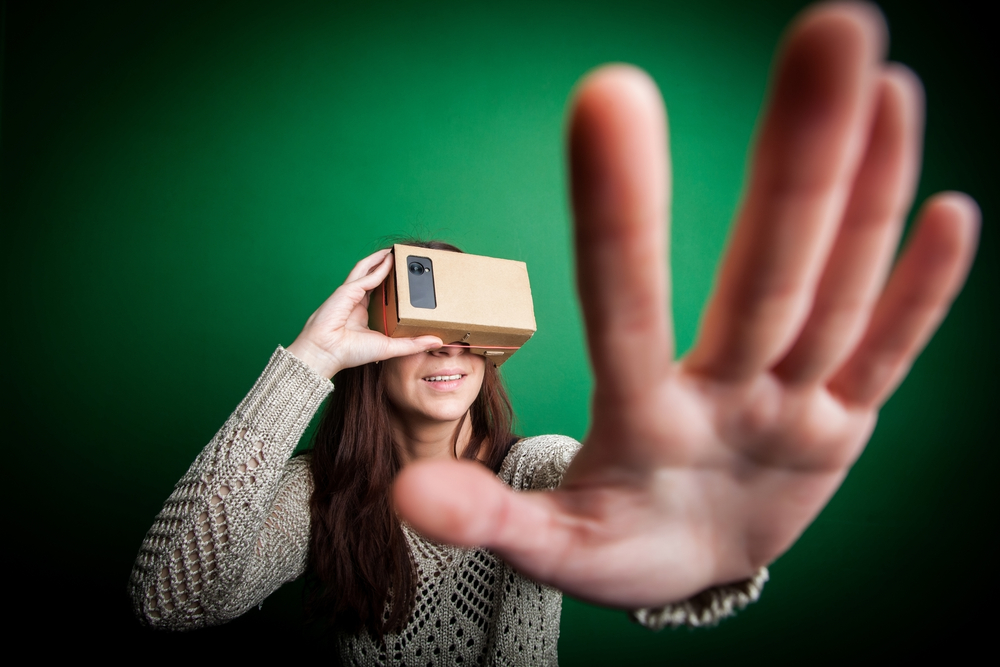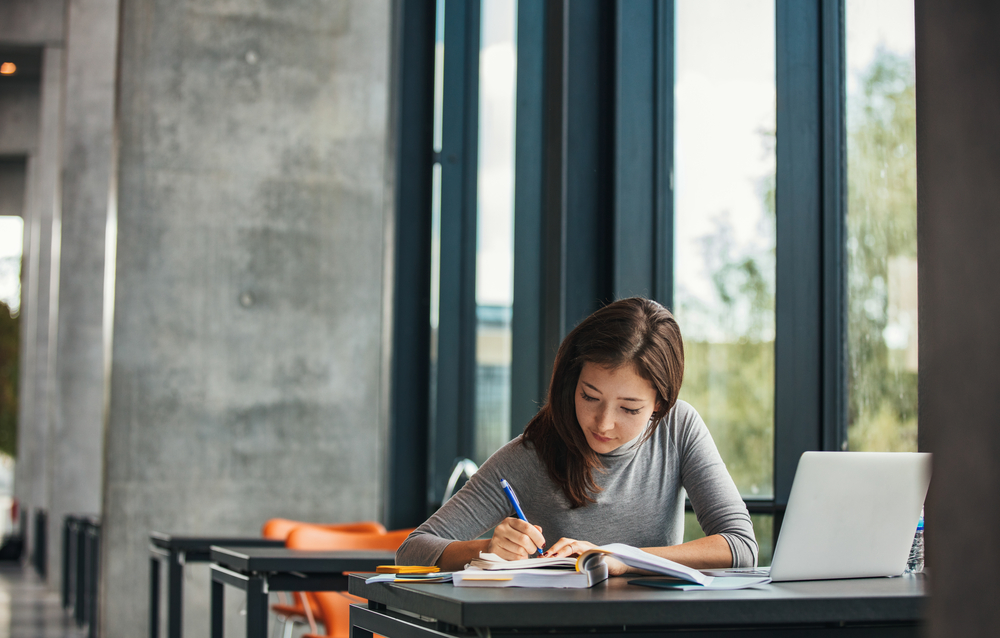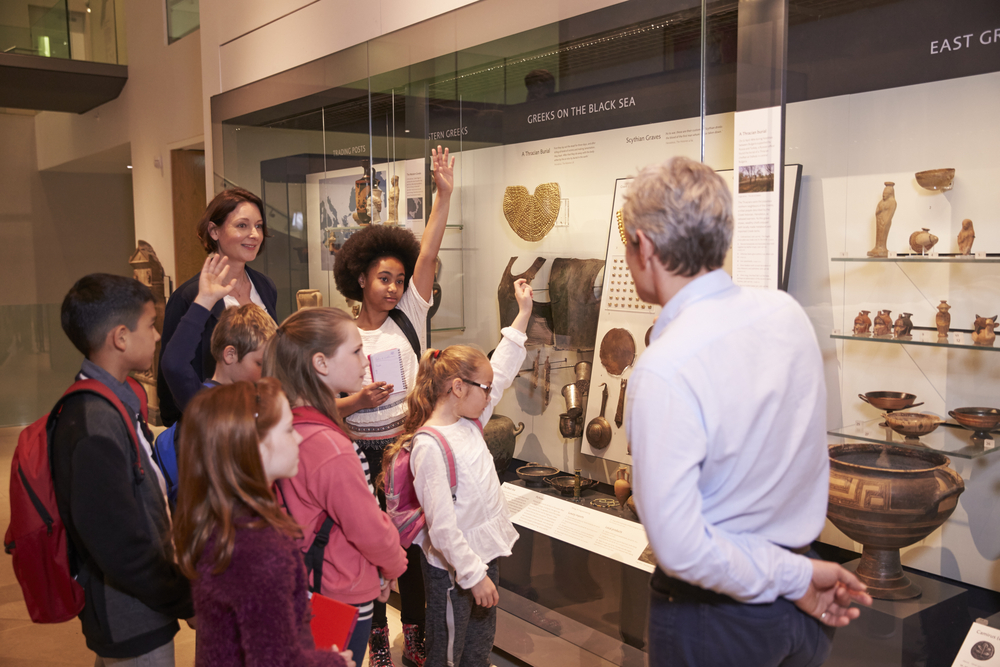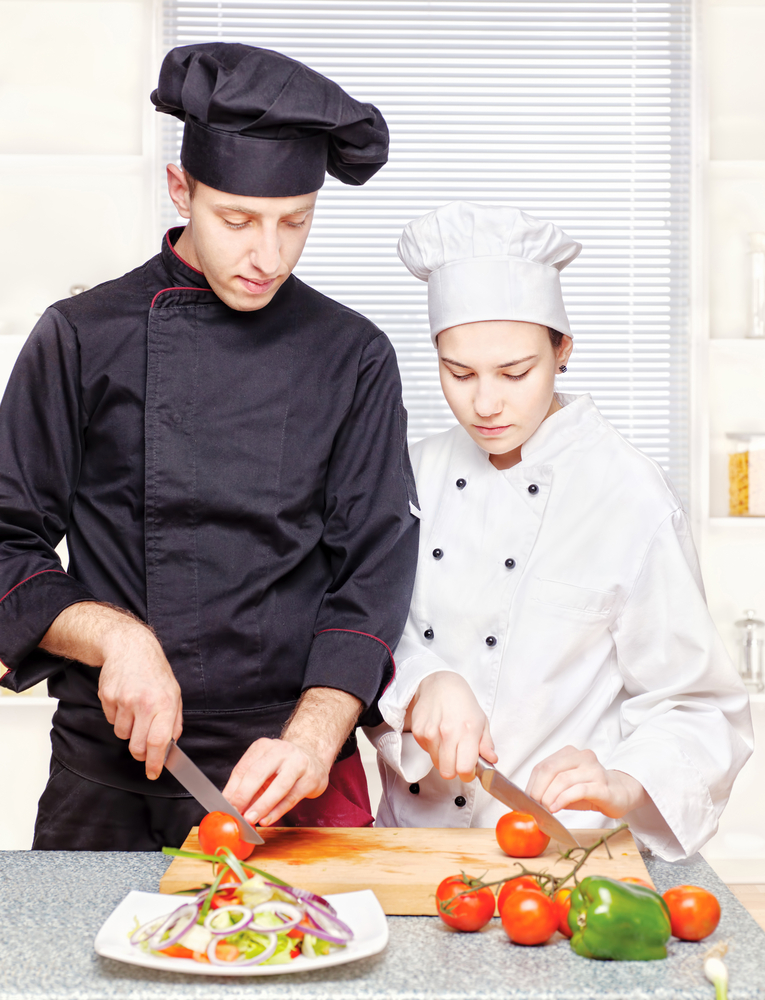Innovation in the Classroom
To say classrooms have evolved over the past 30 years is an understatement. Thirty years ago, a teacher was considered innovative and thinking out of the box if she signed up for one of the televisions stored in the library, carefully rolled it on the cart down the hall, and brought in a VHS clip for her students to see how what she was teaching in class connected to the world around them. Maybe it was a clip from The Wonder Years or an especially sentimental McDonald’s commercial. The content didn’t matter–the students loved her for making the pop culture connection. She may have even been considered edgy because she showed a clip of a movie that was PG-13 or (gasp!) had dialogue that included “bad” words.
Today, if a teacher turns on the television (most likely already in the class and mounted somewhere near the ceiling in a corner of the room), the students take that as a cue to tune out. Video clips aren’t innovative. A hands-on approach to learning, especially if it gets students out of their seats, is what works. While many teachers employ the Discovery Learning Method approach, there are also several other innovations that teachers can make to their teaching style to shake things up. Below are three ways that teachers can be more innovative in the classroom.

Technology
Keeping up with technology trends is the best way for teachers to be innovative. Granted, this can be expensive as new technology trends are never cheap, but even just taking cell phones into consideration is a small step that teachers can take to be more innovative. Many schools no longer have a zero tolerance policy with cell phones because teachers realize what a valuable source of information students have literally at their fingertips. If a student stumps the teacher, the class can find the answer together. Giving students a chance to use their cell phones for research–and teaching them the difference between a good source and a bad source–sets them up to be lifelong learners.
Additionally, while it’s not likely that schools will be able to afford a classroom set of top-of-the-line virtual reality glasses, they may be able to afford a classroom set of Google Cardboard. With the help of a myriad of apps, students can go on virtual field trips around the world to explore famous buildings (Google Expeditions App), walk down streets in other countries (Google Street View app), look inside a human brain (InCell and InMind), and even use the Cardboard Design Lab app to learn the basics of how to create their own virtual reality experience. Whether you have an entire classroom set or just a few pairs that students take turns using, Google cardboard gives students a chance to visit places they may never see in person. 
In the same vein, many school districts also provide tablets to their students. According to an infographic by PracTutor, 81% of teachers think tablets can enhance classroom learning and 64% of high school seniors said they help them study more efficiently. You can use tablets for note taking, completing and turning in assignments, and to help with organization and communication. Gone are the days of lugging around 5-subject notebooks and 3-inch binders for every class. As long as a student remembers to bring their tablet to and from school every day (not to mention keep it charged), students lose less work, have more opportunities to be creative with movie-making and songwriting software, and parents can always check in to see what is going on.
Teachers can also utilize Skype in the classroom to bring in guest speakers that may not normally be able to make a classroom visit. This can include lawmakers, scientists, other classes, and celebrities. If you’re reading a book in class and the author is alive, all it takes is reaching out to see if they’d be interested in making a guest appearance in your class. It may not be for more than a quick hello, but just having the opportunity for students to connect with the work they are studying in a personal way is huge. If you are teaching persuasion, students can draft letters to people to meet virtually in their classroom. There is even a program called “Skype A Scientist” that connects classrooms with scientists for lively discussions. Teachers request a scientist from one of 20 different categories and are matched with someone in the field you are looking for. This is meant to be a discussion and not a lecture, so teachers will have to spend time with students developing questions to ask.
Of course, using technology for the sake of using technology doesn’t necessarily innovate a classroom. While 74% of teachers surveyed by PBS Learning Media agree that educational technology is a student motivator, there are caveats. If a student is doing a math worksheet on a computer that is the same math worksheet they’d be working on with pencil and paper, there’s no innovation. If, on the other hand, students are completing a math assignment that, with every correct answer, they are coding and bringing an animation to life, then that is innovative. Teachers have to be very aware of understanding why they are choosing to use technology in the classroom and how it elevates a child’s thinking. Steve Jobs famously said, “Technology is nothing. What’s important is that you have a faith in people, that they’re basically good and smart, and if you give them tools, they’ll do wonderful things with them.” While it’s great to have technology in the classroom, if you aren’t using it with good intentions, it’s a waste.

Self-Directed Learning
Self-directed learning gives students an opportunity to focus on something that interests them. Many teachers have attempted this by giving students a list of topics from which to choose for a research project, but what if a teacher gave students free reign to learn whatever they wanted? Is that even possible?
Google once used a concept called “20% Time” at its headquarters and a lot of companies have adopted the idea of allowing 20% of a person’s day to be spent working on anything as long as the work somehow benefited the company. Believe it or not, “20% Time” led to major breakthroughs in Gmail, AdWords, Google Talk, and Google News.
Teachers can do this in their classrooms. If a classroom is 50 minutes long, the idea is to give students 10 minutes to work on any project they want, as long as there is learning involved. It doesn’t have to be related to the specific content they are currently studying (although it can if the student is passionate about it), nor does it even have to be related to the broad subject of the class. Results have been anything from learning new languages to planning and running fundraisers to engineering robots, conducting science experiments, and filming documentaries. Students find what they’re passionate about and explore how to make it possible. Teachers help by providing tools needed to perform research or experiments and by having discussions with students about their projects. But all in all, students are given time to explore their passions. It’s a far cry from students being told they have to learn something and it keeps the fire ignited in students that makes them want to learn more.
Self-directed learning, believe it or not, gets schools, teachers and parents and the community involved. Students are excited to share what they’re working on. Teachers, however, need to spend time helping students develop the skills they need to be self-directed learners. If a student is given the opportunity to learn what they want to learn in a way they want to learn it, it might be a little intimidating. They may not know where to start, but once they do, they will be unstoppable. Even Einstein agreed, “Wisdom is not a product of schooling but of the lifelong attempt to acquire it.”

Place-Based Learning
Yes, students spend eight hours each day in the classroom. But a lot of learning happens outside of school. Place-based learning recognizes this. Obviously field trips are a great example of place-based learning Teachers can take their students on field trips to local planetariums or museums. Students can tour a Community Theatre performing Shakespeare. But place-based learning can go above and beyond afternoon field trips and truly immerse a student in his or her community. The Environmental Charter School in Pittsburgh, for example, often takes students to a 500-acre park that is right next door to the school.
While there are many distinct categories of place-based learning, three common types are project learning, service learning, and work-based learning. Project learning gives students a chance to focus on something they consider a problem and work towards finding a solution for it. This is a great method for schools to use because it develops a student’s critical thinking skills as they brainstorm ideas and then teaches them to take action to solve a problem.
 Service learning is very common. Many school districts have community service requirements in which students have to volunteer a certain number of hours per year. According to the National Youth Leadership Council, service learning is “an approach to teaching and learning in which students use academic knowledge and skills to address genuine community needs….Successful service-learning projects are tied to specific learning objectives, and many of the best are tied to numerous areas of study…These connections not only deepened the impact projects had on learning, but also provided the young people with a broader understanding of how different subjects are interrelated.”
Service learning is very common. Many school districts have community service requirements in which students have to volunteer a certain number of hours per year. According to the National Youth Leadership Council, service learning is “an approach to teaching and learning in which students use academic knowledge and skills to address genuine community needs….Successful service-learning projects are tied to specific learning objectives, and many of the best are tied to numerous areas of study…These connections not only deepened the impact projects had on learning, but also provided the young people with a broader understanding of how different subjects are interrelated.”
 Work-based learning gives students an opportunity to explore a job field they are interested in pursuing. It provides students a chance to learn technical, academic and other work-related skills by working in a real work environment. This is different from part-time after school jobs because employers, students, and teachers decide at the start of the opportunity what the goals are for the student, how success will be measured, and what the learning outcome will be. Similar to an internship, it gives students a chance to see a certain industry first hand and start to decide whether it is where they see themselves working.
Work-based learning gives students an opportunity to explore a job field they are interested in pursuing. It provides students a chance to learn technical, academic and other work-related skills by working in a real work environment. This is different from part-time after school jobs because employers, students, and teachers decide at the start of the opportunity what the goals are for the student, how success will be measured, and what the learning outcome will be. Similar to an internship, it gives students a chance to see a certain industry first hand and start to decide whether it is where they see themselves working.
The best part about place-based learning? It can happen anywhere. Whether you teach in a large city or a rural area, the goal of place-based learning is to connect students with their immediate surroundings. When they can learn about things at the local level, then they can apply it to a bigger picture.
Scholar Gregory Smith explains place-based learning as follows: “Place-based education is nothing new…its focus on the incorporation of local knowledge, skills, and issues into the curriculum, involves an effort to restore learning experiences that were once the basis of children’s acculturation and socialization…In this way, communities could ensure their own sustainability as generations passed on their expertise to young people drawn to continue this work.”
Conclusion
There is a myriad of ways to make a classroom innovative. As a teacher, you have to keep in mind your students, their interests, the community, and how to make them excited about learning. It doesn’t matter if you are using the latest and greatest in technology or taking your students to a nearby gallery, innovation is about finding ways to reach your students that you’ve never used before. You don’t have to re-invent the wheel to teach geometry. But you do have to re-evaluate whether your students are simply learning content or if they are seeing topics first hand and how they relate to the world around them.